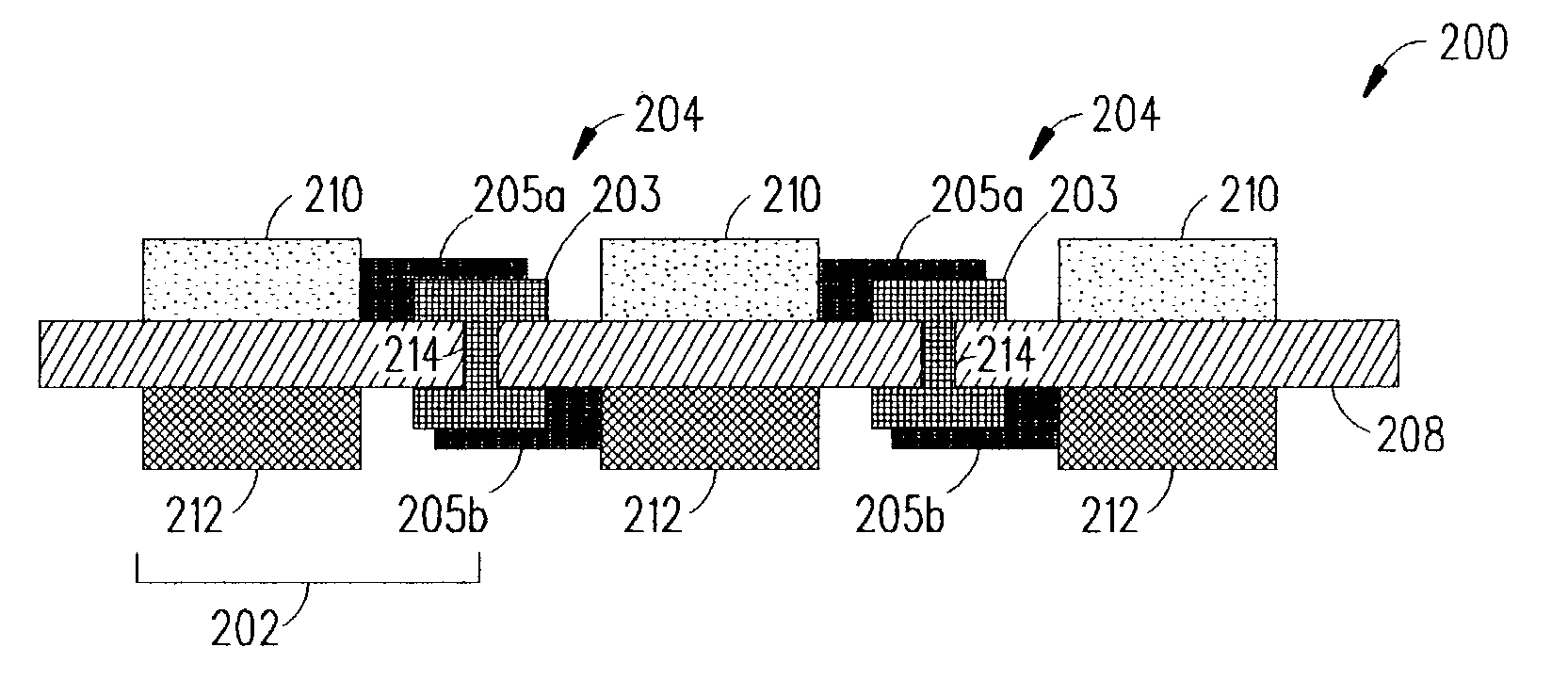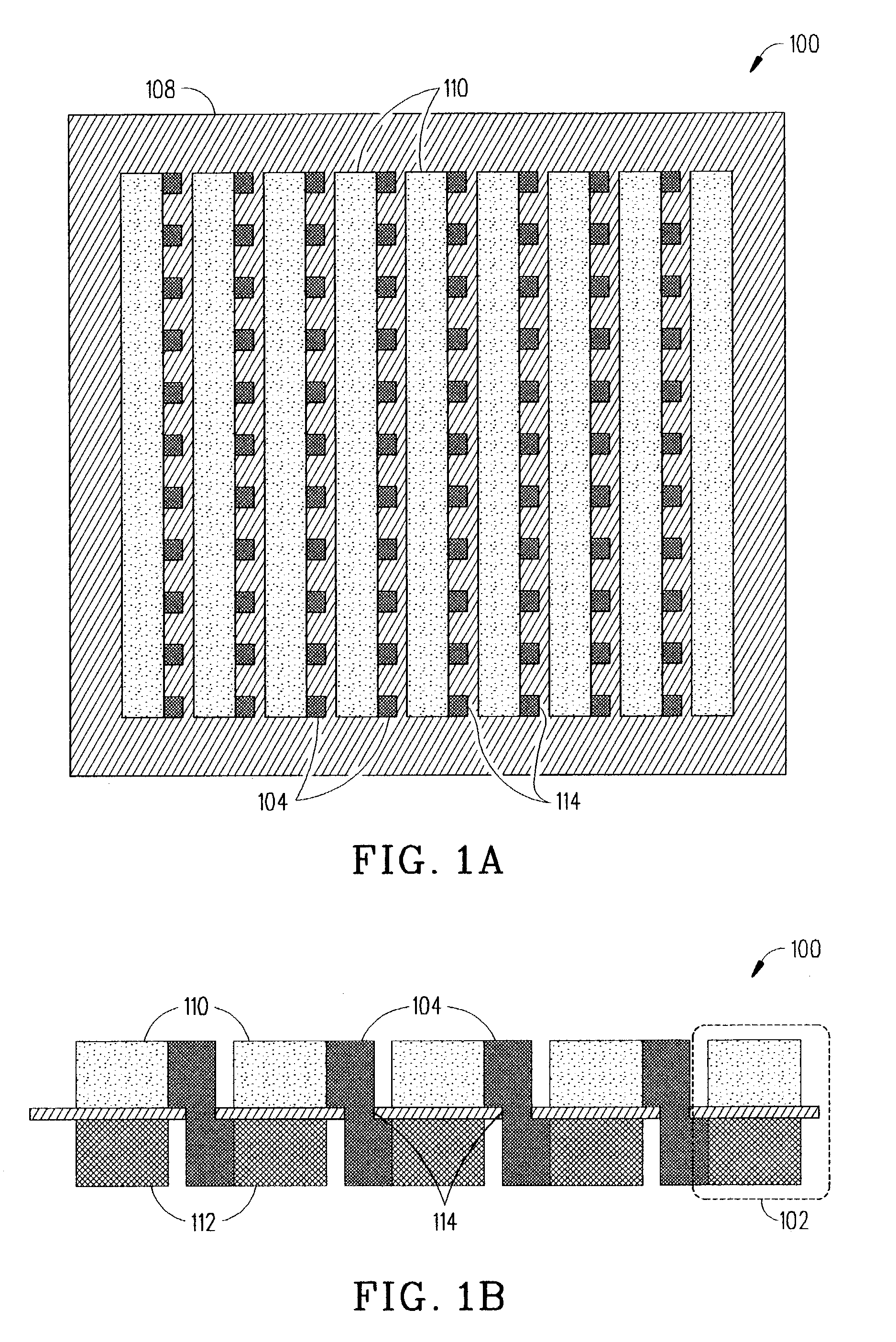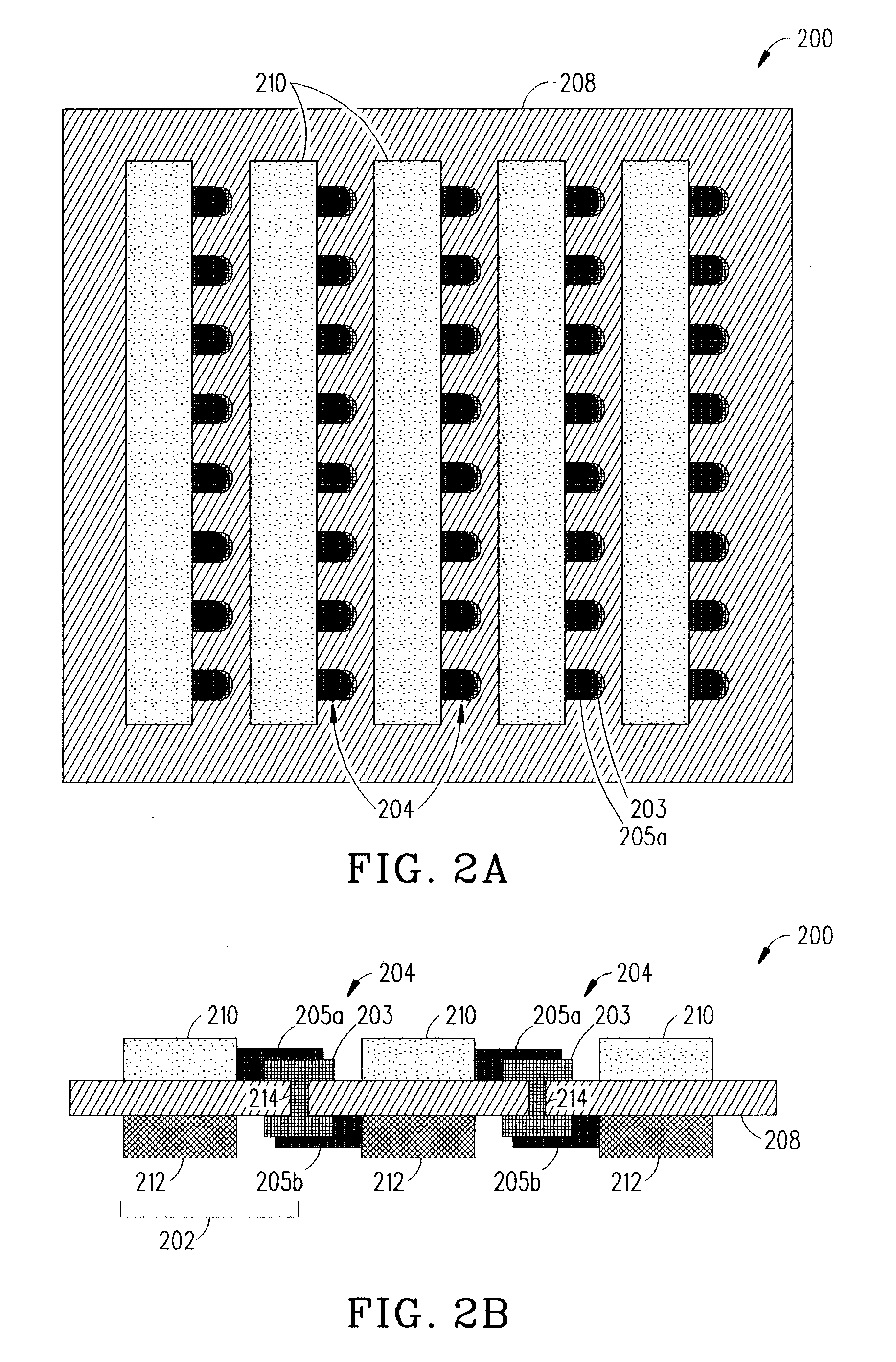Fuel cells with enhanced via fill compositions and/or enhanced via fill geometries
a technology of fuel cells and compositions, applied in the field of fuel cells, can solve the problems of limiting the durability of fuel cells, not being environmentally sound, and not being energy efficient in gas turbines and diesel generators
- Summary
- Abstract
- Description
- Claims
- Application Information
AI Technical Summary
Problems solved by technology
Method used
Image
Examples
first embodiment
[0023] Via holes 114 were punched in an unsintered tape cast electrolyte sheet 108 of zirconia 3-mole % yttria. The electrolyte sheet 108 was sintered at 1430.degree. C. for 2 hours. The sintered electrolyte sheet 108 was about 20 microns thick and the via holes 114 were about 75 microns in diameter. Different composition ranges of LaCrO.sub.3 with silver-palladium-platinum, gold-platinum-palladium, silver-palladium-rhodium, gold-rhodium-palladium and mixes thereof were made into inks and painted or screen printed into the via holes 114 to form electrical conductors 104'. The electrical conductors 104' were sintered for up to 2 hours in a temperature range of 800-1430.degree. C. in air which was hot enough to form a gas tight seal and electrical continuity through the electrolyte sheet 108. The electrical conductors 104' made from cermets with up to 80% volume of LaCrO.sub.3 and metallic alloy did not crack the electrolyte sheet 108. Cermets with greater than 95% volume of LaCrO.sub...
example # 1
EXAMPLE #1
Second Embodiment
[0028] Via holes 114 were punched in an unsintered tape cast electrolyte sheet 108 of zirconia 3-mole % yttria. The electrolyte sheet 108 was sintered at 1430.degree. C. for 2 hours. The electrolyte sheet 108 was about 20 microns thick, and the via holes 114 were about 75 microns in diameter. A composition of 34% volume of gold, 50% volume of platinum and 16% volume of palladium was made into an ink and screen printed in the via holes 114 to form the electrical conductors 104". The electrical conductors 104" were sintered for up to 1 hour in a temperature range of 1350.degree. C. in air, resulting in a gas tight seal and electrical continuity through the electrolyte sheet 108.
example # 2
EXAMPLE #2
Second Embodiment
[0029] Via holes 114 were punched in an unsintered tape cast electrolyte sheet 108 of zirconia 3-mole % yttria. The electrolyte sheet 108 was sintered at 1430.degree. C. for 2 hours. The electrolyte sheet 108 was about 20 microns thick, and the via holes 114 were about 75 microns in diameter.
[0030] Via pad print: an ink containing silver and 10% palladium was screen printed in the form of a via contact pad, dried and fired at 900.degree. C. for 1 hour in air. A porous paper located underneath the via hole during printing was used to absorb any ink filling the hole--ensuring the via hole itself was not filled.
[0031] Via fill print: an ink containing 100% gold was screen printed over the fired 90% silver and 10% palladium via pads, in a pattern covering an area immediately about the via hole, dried and fired at 900.degree. C. for 1 hour in air. A non-wetting surface (wax paper) was located underneath the via hole to promote filling by the gold ink. This tech...
PUM
 Login to View More
Login to View More Abstract
Description
Claims
Application Information
 Login to View More
Login to View More - R&D
- Intellectual Property
- Life Sciences
- Materials
- Tech Scout
- Unparalleled Data Quality
- Higher Quality Content
- 60% Fewer Hallucinations
Browse by: Latest US Patents, China's latest patents, Technical Efficacy Thesaurus, Application Domain, Technology Topic, Popular Technical Reports.
© 2025 PatSnap. All rights reserved.Legal|Privacy policy|Modern Slavery Act Transparency Statement|Sitemap|About US| Contact US: help@patsnap.com



